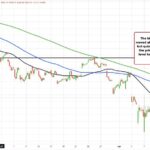
Navigating Tariff Turbulence: Amazon’s Impact on Third-Party Sellers
Tháng 4 15, 2025US Import Prices and NY Fed Manufacturing Index Drive USD Volatility
Tháng 4 15, 2025Recent Developments in U.S. Stocks: Trade Tensions and Recession Fears
In recent weeks, the U.S. stock market has encountered a series of challenges that have drastically impacted investor confidence and market performance. The ongoing trade tensions between the United States and China, coupled with growing concerns about a potential recession, have led to noteworthy fluctuations in stock values. The blog discusses China’s President Xi Jinping’s recent meeting with top global CEOs to address U.S.-China trade tensions, emphasizing China’s commitment to stability and favorable treatment of foreign companies amid ongoing tariff challenges.
Stock Market on a Decline
The U.S. stock market has recently reverted to negative territory, a development that highlights the underlying volatility attributed to the escalating trade issues between the two economic giants. This unsettling trend illustrates a broader pattern where market gains are often quickly overshadowed by adverse news. In particular, the uncertainty surrounding tariffs and trade policies has sown fear among investors. The fear of a potential recession looms large, causing many to reconsider their positions in the market. As a result, major indexes, including the Dow Jones and Nasdaq, have seen significant declines, reflecting the wider apprehension permeating the financial landscape.
Tariff Implications: A 104% Tariff on Chinese Goods
The U.S. administration has signaled a tough stance against China by announcing a staggering 104% tariff aimed at a range of Chinese imports. This move not only exacerbates existing trade tensions but also adds layers of complexity to the U.S.-China relationship, which many analysts view as critical to global economic stability. These tariff increases are expected to compound fears of an economic slowdown, as businesses and consumers brace themselves for higher prices and diminished supply chains. Such tariffs could ultimately stifle economic growth and trigger further market volatility, leading investors to tread cautiously.
Impact on the Oil Market
The ramifications of these economic concerns extend into the oil market as well. The latest reports indicate a decline in oil prices, which many attribute to the pervasive anxiety tied to potential recession scenarios. As fears swirl regarding decreased demand for oil during a period of economic contraction, the crude market faces significant headwinds. Investors are closely monitoring these trends, as fluctuations in oil prices can have far-reaching implications for inflation and economic performance at large.
The Downward Pressure on Major Indexes
The repercussions of these developments are particularly evident in the performance of major stock indexes. The Dow Jones Industrial Average and the Nasdaq Composite have both experienced notable downturns as investor sentiment has shifted towards caution. The technology sector has been notably hard-hit, with many tech stocks facing pressure due to fears related to supply chain disruptions and reduced consumer spending. As businesses navigate these turbulent waters, the resilience of the stock market remains called into question, leading many analysts to advocate for a more nuanced approach to investing during these unpredictable times. The blog outlines key investment mistakes to avoid, emphasizing the importance of understanding market volatility and making informed decisions, which aligns with the challenges faced by investors amid current U.S. stock market fluctuations.
In summary, the interplay between increased tariffs, trade tensions, and recession fears has repositioned U.S. stocks into a realm of uncertainty. Investors are advised to stay informed and agile in this rapidly changing landscape, as the implications of these economic factors continue to unfold. As always, the ability to respond effectively to emerging news will be critical for navigating the complexities of the current market environment. The blog analyzes current market conditions of the GBP/USD pair, providing insights into trading strategies during periods of indecisiveness, which mirrors the cautious approaches investors are taking in the U.S. stock market amid recession fears.
